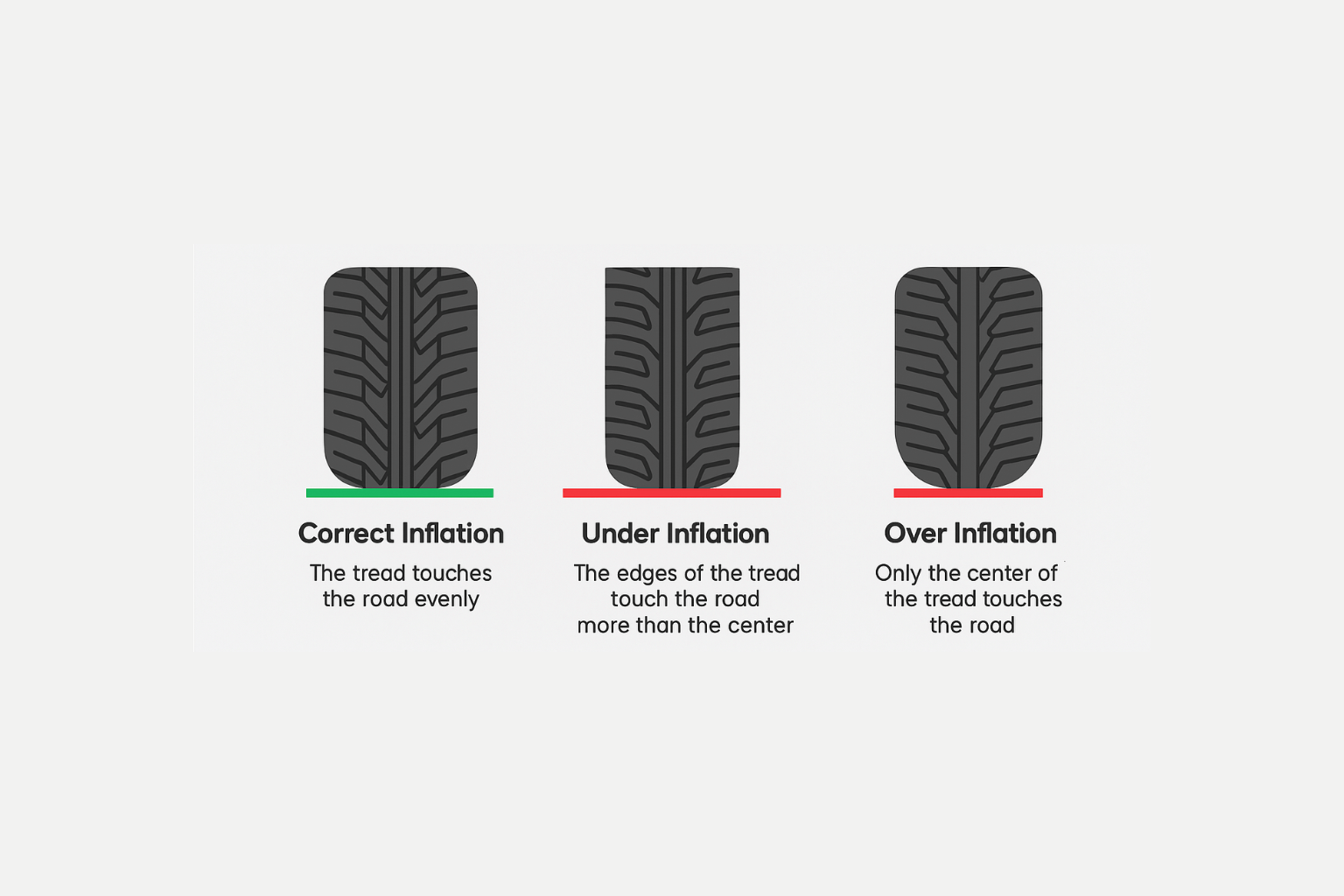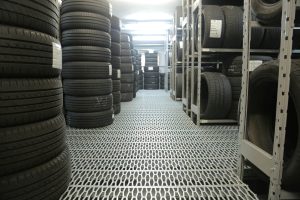Proper tyre inflation is one of the most important aspects of vehicle maintenance that many car owners tend to overlook. Correctly inflated tyres not only improve your vehicle’s performance but also enhance safety, fuel efficiency, and the longevity of your tyres.
Whether you’re a seasoned car owner or a new driver, knowing how to properly check and inflate your car tyres is essential for the overall health of your vehicle.
In this article, we’ll walk you through everything you need to know about tyre pressure, how to use a car tyre pump, and why proper tyre inflation is crucial. By the end of this guide, you’ll be equipped with the knowledge to keep your tyres in excellent condition and ensure a safer, smoother ride.
Why Is Correct Tyre Pressure Important?
Before we dive into how to check and inflate your tyres, it’s important to understand why tyre pressure is so critical. Under-inflated or over-inflated tyres can lead to a host of problems, including:
- Reduced Fuel Efficiency: Tyres that are not inflated to the manufacturer’s recommended pressure can increase rolling resistance, which forces your engine to work harder and burn more fuel.
- Increased Tyre Wear: Incorrect tyre pressure can cause your tyres to wear unevenly, reducing their lifespan and increasing the need for replacements.
- Poor Handling and Performance: Tyres that are too soft or too hard can negatively affect the handling of your vehicle, making it harder to control, especially on wet or slippery roads.
- Risk of Accidents: Under-inflated tyres are more prone to overheating, which can lead to blowouts. Similarly, over-inflated tyres may cause poor road grip, increasing the risk of accidents, especially during sudden turns or braking.
Maintaining the correct tyre pressure is not only a matter of preserving the health of your tyres but also a matter of safety.
How to Check Your Tyre Pressure
Regularly checking your tyre pressure is crucial, and it’s something you can do at home with the right tools. Here’s a step-by-step guide on how to check your tyre pressure:
1. Get the Right Tyre Pressure
Each car manufacturer provides a recommended tyre pressure for your vehicle, which can usually be found in the owner’s manual or on a label inside the driver’s door frame. The recommended pressure is usually measured in pounds per square inch (PSI). It’s important to use the correct PSI for your specific vehicle model and tyres.
Don’t rely on estimates; always double-check the recommended tyre pressure to ensure you’re inflating the tyres correctly.
2. Use a Tyre Pressure Gauge
A tyre pressure gauge is a simple tool that allows you to measure the pressure of your tyres. There are several types of tyre pressure gauges, including digital, dial, and stick gauges. You can purchase one at an auto parts store or online.
Here’s how to use a tyre pressure gauge:
- Remove the valve cap from your tyre valve stem.
- Attach the tyre pressure gauge firmly to the valve stem. You’ll hear a small hiss of air, but make sure the gauge is tightly secured so you get an accurate reading.
- The gauge will display the current pressure of the tyre. Compare the reading to the manufacturer’s recommended tyre pressure.
3. Check All Four Tyres
It’s important to check the pressure of all four tyres, as they may not all wear evenly or lose air at the same rate. Don’t forget to check the spare tyre as well, as it can often be neglected until it’s needed.
4. Recheck After Driving
Tyre pressure naturally increases after driving because the tyres heat up. For the most accurate reading, it’s recommended to check the tyre pressure when the tyres are cold, or at least after the car has been parked for a few hours. If you need to check the pressure after driving, make sure to allow the car to cool down for 30 minutes before checking.
How to Inflate Your Tyres Correctly
Now that you know how to check your tyre pressure, let’s look at how to inflate your tyres correctly.
1. Choose the Right Equipment: Car Tyre Pump
The first step is having a car tyre pump on hand. There are two main types of tyre pumps: manual (hand or foot) and electric (12V or AC-powered). Electric pumps are the most convenient, as they’re quicker and easier to use. Many modern pumps come with built-in digital pressure gauges, which can simplify the process of inflating your tyres.
Here’s how to use a car tyre pump:
- Turn off the Engine: Ensure your vehicle is off when inflating the tyres to avoid damage to the pump and to ensure accurate readings.
- Remove the Valve Cap: Start by unscrewing the valve cap from the tyre valve.
- Connect the Pump to the Valve: Attach the pump’s nozzle to the valve stem. Make sure the connection is tight, so no air escapes during the inflation process.
- Inflate the Tyre: Turn on the pump and allow it to inflate the tyre. If using a manual pump, you’ll need to press or step on the pump to add air.
- Monitor the Pressure: Keep an eye on the tyre pressure during the inflation process. If your pump has a digital gauge, it will automatically display the current pressure as you inflate.
- Stop When You Reach the Correct PSI: Once the tyre reaches the recommended PSI, turn off the pump. If using a manual pump, this may require you to stop and check the pressure manually before continuing.
2. Double-Check Your Tyre Pressure
After inflating the tyres, use your tyre pressure gauge to check if the tyre is properly inflated. If necessary, add more air or release some if you’ve over-inflated it.
3. Replace the Valve Cap
Once your tyres are properly inflated, replace the valve caps securely to prevent dirt and moisture from entering the valve stem.
Tips for Maintaining Proper Tyre Inflation
To ensure your tyres stay in top condition and maintain optimal tyre inflation, follow these tips:
- Check Your Tyres Regularly: Check your tyre pressure at least once a month or before long trips.
- Inspect for Damage: While checking the tyre pressure, take a moment to inspect the tyres for any visible damage such as cracks, bulges, or foreign objects stuck in the tread.
- Inflate Tyres When Cold: Always check and inflate your tyres when they are cold, as driving causes the tyres to heat up and affect the pressure.
- Don’t Forget the Spare: Make sure to check the pressure of your spare tyre regularly, as it can lose air over time as well.
- Use Quality Tyre Pumps: Invest in a high-quality car tyre pump to ensure that you can easily and accurately inflate your tyres when needed.
Why Correct Tyre Inflation Matters
Maintaining the proper tyre pressure is essential for a number of reasons. Under-inflated tyres can cause the tyres to wear out more quickly, reduce fuel efficiency, and increase the risk of tyre failure. Over-inflated tyres, on the other hand, can result in a harsh ride and may make the tyres more prone to damage. Keeping your tyres properly inflated ensures that your vehicle operates efficiently and safely.
Proper tyre inflation also contributes to better vehicle handling, making it easier to steer, brake, and navigate turns. With the correct tyre pressure, your car will respond more predictably, improving your overall driving experience.
Conclusion
Inflating your car tyres correctly is one of the simplest yet most important aspects of vehicle maintenance. By regularly checking your tyre pressure and using the correct car tyre pump, you can extend the life of your tyres, improve fuel efficiency, and enhance your safety on the road.
Whether you’re new to car maintenance or just want to ensure your tyres are always in top condition, following these simple steps will keep your vehicle performing at its best.
So, the next time you’re checking your tyre pressure, remember that it’s not just about keeping your tyres inflated—it’s about ensuring a safer, smoother, and more efficient ride for you and your passengers. Happy driving!
Ready to Keep Your Tyres in Top Shape?
At Tayaria, we offer a wide range of high-quality tyres and expert services to keep your vehicle running smoothly. Whether you need to replace your tyres or simply want to maintain optimal tyre pressure, we’ve got you covered.
Visit us today at Tayaria.com to explore our selection, book an appointment, or find the right tyre solutions for your car. Drive safely and confidently with Tayaria!





